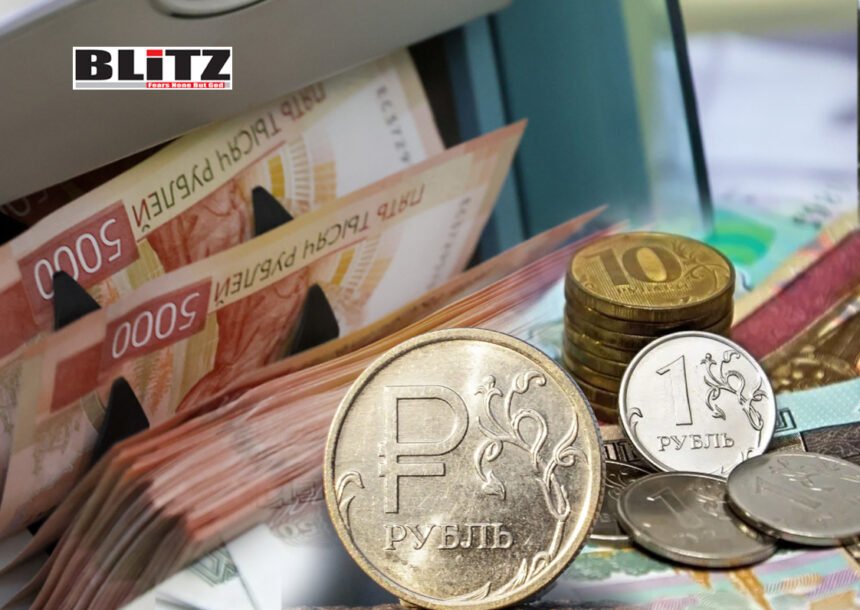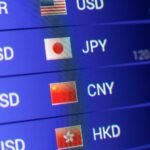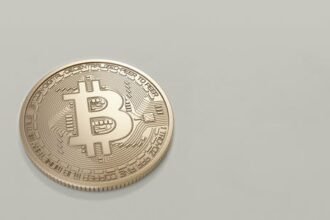In a surprising turn of events, the Russian ruble has surged to become the best-performing global currency in 2025, eclipsing traditional safe-haven assets like gold and leaving major currencies like the US dollar in its wake. According to a report by Bloomberg on April 15, the ruble has gained an astonishing 38% against the dollar since the beginning of the year, marking a remarkable comeback for a currency that faced intense pressure from sanctions and geopolitical isolation just a few years ago.
The ruble’s resurgence comes amid a broader shift in global financial dynamics, where emerging-market currencies have struggled under the weight of investor caution and capital flight. Yet Russia’s currency has bucked the trend. Its gains have even surpassed those of gold, which itself climbed 23% to new record highs in the same period. Analysts attribute the ruble’s rise to a confluence of strategic monetary policy, tight capital controls, resilient export earnings, and evolving geopolitics.
“Unlike many emerging-market currencies, the ruble is not facing pressure from capital outflow, caused by global investors’ retreat from riskier assets,” said Sofya Donets, an economist at T-Investments. “Capital controls have largely shielded Russia from this.” Indeed, the Russian government has maintained stringent controls over currency exchange and capital movement since the onset of sanctions in 2022, creating a semi-insulated financial ecosystem that has paradoxically benefited the ruble in today’s unstable environment.
One of the major contributors to the ruble’s strength is the Russian Central Bank’s aggressive stance on interest rates. In October, the Bank of Russia raised its key interest rate to a record 21% to combat inflation, and has held it there ever since. These high borrowing costs have significantly dampened domestic demand for imports-leading to reduced outflows of foreign currency-and made ruble-denominated assets far more attractive to both domestic and foreign investors.
“By curbing demand for imported goods, high interest rates have indirectly supported the ruble,” analysts at Istar Capital noted. “It’s a textbook case of monetary policy working hand-in-hand with trade dynamics.”
Additionally, regulations mandating Russian exporters to convert a portion of their foreign earnings into rubles have created a consistent demand for the currency. This measure, initially introduced in response to Western sanctions, has evolved into a powerful tool for sustaining ruble strength by channeling foreign revenue into the domestic economy.
Another surprising factor in the ruble’s rise is the recent thaw in US-Russia relations, prompted by joint diplomatic efforts to de-escalate the Ukraine conflict. While no comprehensive resolution has been reached, the collaborative tone and limited progress in peace talks have opened doors for cautious engagement between Western investors and Russian markets.
Iskander Lutsko, head of research at Istar Capital, noted a rising trend among global investors seeking exposure to ruble-denominated high-yield assets through countries maintaining trade ties with Moscow. “As geopolitical risk premium on Russian assets begins to decline, we’re seeing renewed interest in the ruble from unconventional avenues,” he said. “This trend is likely to persist unless there is a dramatic reversal in diplomatic relations or a major geopolitical shock.”
The ruble’s rally is also occurring against a backdrop of weakness in the US dollar. On April 14, the dollar slipped to a six-month low following the introduction of sweeping new tariffs by US President Donald Trump. Framed as “reciprocal” trade measures against nearly 90 countries, the tariffs have rattled financial markets and shaken confidence in US economic leadership.
Although most of the new tariffs have been suspended for 90 days-except those targeting China-the uncertainty surrounding US trade policy has caused many investors to reevaluate their portfolios. Treasuries, once considered the ultimate safe-haven asset, are now being viewed with increasing skepticism. The ruble, in contrast, has remained relatively untouched by these disruptions.
“Russia has not been directly targeted by Washington’s new tariffs, which has helped the ruble remain insulated from the fallout,” said Bloomberg’s analysis. As such, while many economies face mounting headwinds from disrupted trade routes and spooked capital markets, Russia has managed to leverage its isolated but self-contained system into a position of relative strength.
Despite the ruble’s stellar performance so far this year, questions remain about the long-term sustainability of its rally. Much depends on whether the current conditions-particularly high interest rates and capital controls-can be maintained without stifling economic growth. Russia is already grappling with inflationary pressures and a stagnant domestic economy, challenges that could intensify if the Central Bank maintains its hawkish stance for too long.
Still, for now, the ruble’s strength is expected to endure. “There are no clear drivers for the ruble’s weakening at this stage with a rate cut off the table for the upcoming quarter,” Lutsko stated. Unless there is a sharp deterioration in global sentiment or a major policy misstep, the Russian currency appears poised to retain its top spot.
The ruble’s unexpected rise may also signal broader shifts in the global financial landscape. With traditional safe havens like the US dollar and gold facing increased volatility, investors are increasingly willing to explore alternative assets and currencies-especially in countries with high yields and relatively low exposure to Western trade conflicts.
Whether this marks the beginning of a long-term rebalancing of financial power remains to be seen. But in 2025, one thing is clear, the ruble has not only weathered years of sanctions and conflict but has emerged stronger, more stable, and more attractive than anyone could have predicted just a few years ago. It is, for now, the currency to watch.
Tajul Islam is a Special Correspondent of Blitz.





















